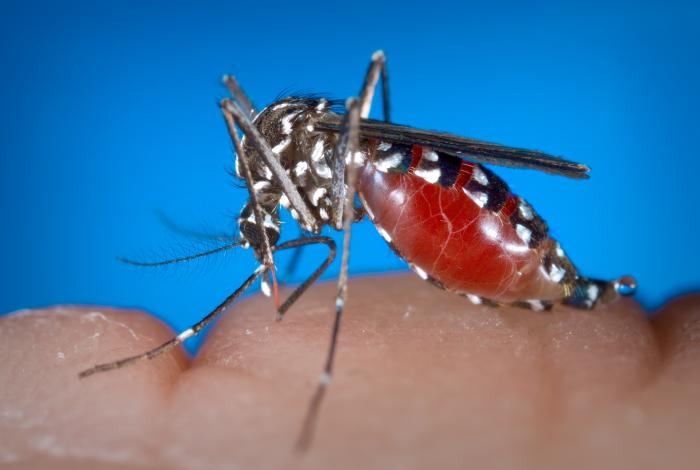History you should know: The Treaty of Guadalupe Hidalgo
Posted on February 22, 2016 2 Comments
My wife and I were in San Antonio a few years ago, and we decided to take the tour of the Alamo that everyone seems to take when they visit there. As we walked around the different exhibits, we noticed a mother talking to her young child about what happened during the battle there. “The bad people had the Americans surrounded and outnumbered,” she said. “So we fought back and won.”
We looked at each other and kind of wondered about what the woman had just said. If you had sat through the ten minute presentation by one of the historians there, you’d come to know that Texas was a territory of Mexico at the time. Americans had moved in as undocumented immigrants and taken over land. Other English-speaking Texans (Texians) were Mexican citizens, but they held closer ties to the United States. In 1835, the Texians and the “illegals” started an armed insurrection against the Mexican government. The rebels held back the Mexican troops at The Alamo as long as they could before being run-over. More battles ensued until the Texan rebels won independence from Mexico in 1836. Over the next ten years, several skirmishes between the Mexicans and the Republic of Texas took place, leading the United States to intercede and annex Texas into the United States in 1845.
That annexation led to the Mexican-American war between 1846 and 1848. That war ended with the Treaty of Guadalupe Hidalgo. Under the terms of that treaty, most of the states in the west (California, Arizona, New Mexico, Nevada, Colorado) became territories of the United States. Mexicans living in those states were given the option to migrate down to Mexico or stay and become full citizens of the United States. Almost everyone chose to stay.
So, as you can see, labeling the belligerents at The Alamo as “good” or “bad” is a very simplistic way of looking at how that whole thing went down. The Alamo now sits in the United States, so I’m sure that’s why there is that view that the Mexicans were the bad guys. If The Alamo, and all of Texas, had stayed in Mexican control, the story would be different.
Likewise, when people see Hispanic people with Hispanic surnames in the American west, a lot of them assume that those Hispanics are immigrants. For the most part, they’re not. For the most part, their families have been Americans for about 160 years. They just happen to have the names their families had at the time of the treaty. And this is true of many Native Americans from those areas as well. Their names were replaced with Hispanic names as the Spanish conquest marched up into those places we now know as “The Southwest.”
You have to give them credit for not anglicizing their names, though. The Rodriguez didn’t become Rodricks, and the Puentes didn’t become Bridges.
So, to have a clear grasp of the social and political dynamics west of Texas, and to understand why immigration is such a big deal on the border states and beyond, you have to understand how all of those states became American states. But don’t stop there. Read up on why Americans flocked to Texas, and why the Mexican government was welcoming of those “new Mexicans.” Then go back even further and understand what the whole concept of “Manifest Destiny” was and why it influenced what the US is today on the world stage.
In other words, don’t just paint groups as good and bad based on the current state of things. The present is much more complicated than you’d think… And it is complicated because of an even more complicated past.
Six things you need to know about Zika right now
Posted on February 17, 2016 12 Comments
The Zika virus situation is this year’s Ebola. Like with Ebola, a lot of doom and gloom is floating around, and a lot of outright lies are being put forth by people who have no clue of what is going on. They are relying on fears and speculation to drive up visits to their websites or blogs because clicks pay in today’s internet economy.
Not on this blog. If you look around, you’ll see that I am not selling you anything. I’m not advertising for anyone, and I will resist every urge to do so. If I were in the business of making money, I wouldn’t be in Public Health. My profession is notorious for under-paying people in it, unless you manage to land some big-time consultancy or an academic position.
With that in mind, I want to tell you some things you need to know about Zika right now, and some things you need to keep in mind as we move into the warmer months of the year here in the United States, or if you’re traveling abroad. Just like with all emergencies, be informed and act, but don’t get consumed by it all. Most of all, don’t panic.
- Zika is a viral infection caused by — you guessed it — the Zika virus. The Zika virus (or ZIKV as some are calling it) is a relative of Yellow Fever, Dengue, and West Nile Virus. Like its cousins, Zika is transmitted by mosquitoes.
- The species of mosquito that is primarily distributing Zika around the world is the Aedes species of mosquito. Currently, in South America, it is the Aedes aegypti mosquito that is doing most of the transmission. This Aedes species also transmits Chikungunya and Dengue. In the United States, we have the Aedes albopictus species more than A. aegypti. That doesn’t put us in the clear, however, as A. albopictus has been associated with Zika outbreaks in the past.
- It is generally a good idea to avoid being bitten by mosquitoes, whether here in the United States or in a tropical area, or in Europe. It doesn’t matter. Avoid being bitten by mosquitoes, flies, ticks, and other insects/arthropods to maximize your chances of avoiding Zika and other arthropod-borne infections. Avoid areas where there are a lot of mosquitoes, wear long sleeves and long pants if you must go to those areas, wear repellents, drain any standing water near or inside your home, etc. Do what you need to do to prevent mosquito bites and control their population. But be smart about it. Don’t think that because your town government fogged for mosquitoes that somehow you’re protected. You might not be.
- As of today, Wednesday, February 17, 2016, there has been no causal link between microcephaly (a reduced size of the head at birth) and Zika virus infection during pregnancy, but there is compelling evidence that there is a link in there somewhere. A few days ago, an activist group from South America came out with a position that it was a larvicide (a chemical added to water to prevent mosquito larvae from maturing) that was causing the microcephaly seen in places where there is heavy Zika infection rates. This is nothing more than a conspiracy theory at this point. In fact, the evidence against the larvicidal is flimsier than the evidence for Zika causing microcephaly. That is, if we are to believe it’s Monsanto and the evil corporations causing microcephaly, then we must accept that it’s Zika because the evidence for Zika causing it is more coherent.
- There is a lot yet to learn about Zika, shamefully. And I write “shamefully” because Zika has been hitting places far from the United States for a while now, and it is only now that it is at our doorstep that we are panicking into doing something about it. We really are panicking. You see the panic in politicians who are, like they did with Ebola, calling for strict quarantines of people traveling to places where Zika is being actively transmitted. (As if mosquitoes can be quarantined.) And you see the panic in the increased response from the Centers for Disease Control (CDC). They are pulling a lot of resources from a lot of places, yet duplicating a lot of the work that has already been done by public health agencies in other countries. (It’s not good enough until Americans do it, I guess.) Had we done all this when French Polynesia got hit in 2013, we might have avoided Zika from reaching Brazil. Had we done it before that, we might have contained it SE Asia.
- So stay informed on the situation by frequenting the WHO News/Media Center or the CDC Zika Web Page. If you want opinion, you can come to this blog, or Orac’s, or the Public Library of Science’s Neglected Tropical Diseases page, or the Virology Blog. Don’t panic. You’re going to be okay. We all are.
It was worth the ream of paper
Posted on February 15, 2016 9 Comments
It had been a very busy night in the hospital when I got pulled into the lab manager’s office in the morning. Ray was a giant of a man. He was a gentle giant, but he was still pretty imposing. He made me look small, and, as one of my many father figures, I respected/feared the man. So when he asked me to step into his office with that look on his face — the look of an angry dad — my heart kind of sank a little.
Ray rubbed the bridge of his nose with one hand as he held his glasses from his face with the other. A piece of paper sat on his lap. It was a printed email, and I could see that it was from the nursing supervisor who was on that night. “Please tell me,” Ray said with a bit of hesitation, “tell me that you didn’t print off 225 copies of the same lab results to the ICU last night.”
I would have loved to tell him that I didn’t. But I did…
Ten hours earlier, a patient had been brought into the ER for some sort of condition. I forget exactly what was wrong with him, but he spent some time in the ER before they sent him up to the ICU. While in the ER, the patient had a ton of lab work done. There was a complete blood count, a complete metabolic panel, a cardiac panel, some blood banking stuff, urinalysis, and even some testing for a reference lab. Anyway, by the time he was sent to the ICU, all of the patient’s results were in the electronic medical record (EMR).
At around 2am in the morning, as I was running back and forth to the ER, drawing blood and doing a lot of blood work on a lot of patients, the ICU nurse who took charge of the patient called me looking for the patient’s lab results. Apparently, the hard copies of the results didn’t make it onto the patient’s chart. She said she wanted to have the chart complete before the patient’s family doctor came in to visit the patient. I told her that I would send her a copy as soon as I could.
Half an hour later, the nurse called again. She asked if I had sent the results. I told her that I had sent the results, but that they might have printed off in the ER since the patient was still in the ER as far as the EMR could tell. “Maybe you should print them off there yourself?” I suggested. Well, she took the suggestion as a bit of an insult, or something. She told me she was very busy to be printing lab results and asked me to try it again.
I got another call from the nurse at around 3am. The patient’s family doctor was there to see the patient, and the hard copies of the results were not in the chart. She said she was embarrassed, and that I — me, the “lab boy” — was wasting her time. As best as I could, I informed her that we had this wonderful thing called an EMR, where she — or the doctor — could look up the lab results and even print them.
“Rene,” she said with a very stern voice. “I need those lab results printed now, in this patient’s chart, and I don’t want to hear any more excuses.”
“Alright,” I responded. “I’ll make sure you get them.”
There were three printers in the ICU, and I knew the extension names for all of them on the network. I knew them because I had to print off to different printers from time to time, depending on whether or not a printer was down. So I logged into the EMR and ordered 75 copies of the patient’s lab results to each of the three printers. Without giving it a second thought, I clicked on “PRINT”.
Ten minutes later, the nurse called again. “This isn’t funny, Rene,” she said.
“What?” I asked, sheepishly.
“I’ll make sure Ray hears about this in the morning.”
“Oh, you got the lab results! Great. Glad I could help.”
After she slammed down the phone, I went back to all the work that was building up. It was a really busy night, and I would remember it even clearer because of Ray’s meeting with me in the morning…
“Do you think you got your point across?” Ray asked.
“Probably not,” I replied. “She’s pretty dense. She’ll probably keep ordering the lab techs to print results for her out of fear of doing it herself.”
“So, if you didn’t get your point across,” Ray said as he reclined in his chair, a little less angry-looking by now, “why did you do it?”
I thought long and hard before I replied to him. “Because it had to be done, boss.”
After work, I drove over to the local Walmart and bought a ream of paper. It was $3 or so. The following night, knowing that the same nurse was working up in the ICU, I walked up and re-filled the printers with the paper I bought. “I heard there was some concern over the paper running out, so I went and got some more… It’s going to be a long night.”
It had to be done.
What is a “handful”?
Posted on February 14, 2016 1 Comment
Everyone is getting all caught-up in the fever over Zika in the Americas. So I was pleasantly surprised to see an article in a blog I frequent titled: Your Non-Alarmist Guide to the Zika Virus. Unfortunately, it only took one sentence for the whole post to be derailed for me:
“Zika virus, a previously obscure disease that had only caused a handful of cases in Africa and some island nations, is now a major global health concern.”
I thought to myself, “Only a handful?”
Now, I’m not a native English speaker, so there are those times when a phrase or colloquialism evades me. The word “handful” represents “very few” to me, like, five or less. I’d even go with ten or less if you push me. When I look up the word “handful,” I get definitions like “a quantity that fills the hand.” That, to me, is a handful.
From everything I’ve been reading about Zika, there have been thousands of cases of it in Africa and the South Pacific before it hit Brazil last year. Thousands, to me, are not a handful. That’s more like a motherlode or even a shipload. It’s a lot, and not a handful.
Maybe I’m caught up in the word for no reason, and maybe the real message to be learned from the article is that we all need to chill out over Zika and not make asses of ourselves like we did with Ebola. There shouldn’t be a rush to quarantine people willy-nilly because they are coming back from a place in the world that scares us. And we should let the science (especially the epidemiology) guide the response.
But we humans understand risk based on numbers. If you tell me that there are 20 cases of measles in the United States right now, I probably wouldn’t worry because I know that you know that I know that you know that measles is on the rise. Twenty cases, while an embarrassment for the most powerful nation in the world with wide access to vaccines, is not a big deal. On the other hand, if you tell me that all twenty are in my community, then the game changes a little bit. It changes even more if those 20 occurred in the last week. Time and space, you see, make numbers look different… A sort of epidemiological relativity.
So when the author of the post writes right off the bat that there have only been a handful of cases “over there,” the reader may reasonably assume that Zika has not been a big deal to humanity, and that maybe it won’t be this time around either. However, if you look at the field reports and published papers from the outbreaks “over there,” you come to find out that the outbreaks occurred explosively, involved thousands of cases, and were hard to bring under control. Add to that the fact that the microcephaly association may have been missed because of inappropriate surveillance “over there,” and the problem becomes a little bit clearer and a little bit scarier.
I don’t think that it was the author’s intent to undermine the number of cases or the impact of Zika to those countries “over there”. However, I do wish that she would have quantified them a little bit better than just writing “a handful.” A simple literature search for Zika reveals that there were about 20,000 cases in French Polynesia in 2013 during their outbreak. Before that, about 75% of the inhabitants of Yap Island (population ~7,000) came down with it in their outbreak. Going back even further, you see field reports from Africa in which hundreds or thousands of cases are noted in different outbreaks.
Unfortunately, I see the same mistake from other writers trying to convey the magnitude of what is happening in the Americas. Likewise, the people who are easy to panic are making it out to be like everyone and their sister is getting Zika in “those countries.” All this when the answer is somewhere in the middle and the truth is busy trying to catch up to rumors and speculation.
Where do you begin to understand Zika?
Posted on February 7, 2016 5 Comments
It’s all the rage these days to get worked-up about Zika. Just like last year with Ebola, this year we’re freaking out over a disease from “over there” coming “over here” and hurting Americans. Also, the observed association between Zika infection in pregnancy and microcephaly is scaring the crap out of people. (It’s really scaring the far-right, anti-abortion people because women will start thinking of abortions as an alternative to having a microcephalic or anencephalic child.)
A letter went out to students and faculty at the school the other day asking for students to help do research to pin down the incubation period of Zika. The incubation period is the time from initial exposure/infection to the time of initial symptoms. It’s somewhat hard to pin down this time with Zika because it is transmitted primarily by mosquitoes. If you go to a place teeming with mosquitoes, it’s hard to figure out if yesterday’s exposure lead to infection, or the one from last week.
This problem is the same one we see with foodborne diseases. We eat a few times a day, so out opportunities for exposure are many, and they are continuous. But we figure out the likely culprit when different people start reporting the same exposure, e.g. eating the same food at the same event or from the same restaurant. So what do you do when the exposure is mosquito bites all the time, every day, all over the place?
For those, you look at people who travel into and then out of the areas with heavy mosquito presence and then got sick. You determine when the last day they were there was and count from there to get the soonest incubation time, then you determine when they arrived at the endemic area and get the latest incubation time. You this over and over again with as many travelers as possible, and then you figure it out.
As it turns out, Africa, Asian and South American researchers have done this. Even some European scientists who responded to a large outbreak in French Polynesia in the South Pacific have come out with a good estimate of the incubation period. They all agree that it’s between 5 days and two weeks, and that the disease lasts about one week (as long as two weeks). However, for some reason, the school is recruiting students to do a literature review to figure this out. (I cheated. I contacted tropical disease epidemiologists who’ve already done the work.)
And this is the thing about epidemiology education in the United States. As I mentioned before in “The Two Kinds of Epidemiologists“:
“The research and academic epidemiologist looks at a public health problem and designs a study to better understand it. He or she makes sure that the measurements are valid and that the information collected from the study is reliable. They take good care to choose the subjects carefully so as to not introduce bias into the study. With data in hand, they test several hypotheses about the mechanisms that cause whatever disease or condition that they’re studying. They use the “dark arts” — as one frequent reader/commenter has called biostatistics — to make sure that their observations are not due just by chance, or that they’re not being influenced by things seen or unseen. Finally, they put all of their findings in a research article and get it published at one of many reputable scientific journals.”
And then all that information sits in a journal, waiting to be used. Take, for example, the story of Brian Foy. From the Washington Post:
“Brian Foy, a researcher who studies mosquito-borne diseases, said in a 2011 paper that he had found likely evidence of a little-known virus spreading through sex. If true, it would be the world’s first documented case of sexual transmission of the virus, he said at the time.
Foy wanted to study it further, but no one would give him the funding he needed: He had found just one example, and the virus — known as Zika — was too obscure, he was told.”
I read that the other day, and my head exploded.

She gets me.
My head exploded because it was yet another example of how public health is failing to take all that knowledge into action. In 2010, two researchers published a really good paper on “Present and Future Arboviral Threats.” (Arboviruses are viruses transmitted by arthrobods. ARthropods + BOrne + VIRUS, get it?) They wrote:
“Perhaps the greatest health risk of arboviral emergence comes from extensive tropical urbanization and the colonization of this expanding habitat by the highly anthropophilic (attracted to humans) mosquito, Aedes aegypti. These factors led to the emergence of permanent endemic cycles of urban DENV and chikungunya virus (CHIKV), as well as seasonal interhuman transmission of yellow fever and Zika viruses.”
Had I been sitting at the White House and read that paper, I would have convened a panel from CDC, NIH, etc., to come up with an immediate plan to survey for these infections the world over and both track them and combat them… Years before they came to the United States.
But that’s the thing. There are plenty of us doing research and writing papers, and few of us working to put that knowledge into action. What is worse is that those of us who are working on it are not communicating well with each other. We either want to be protective of our work, or we just plain don’t know how to communicate our work. (Look at how we fail miserable to communicate the importance of vaccination in, say, Orange County, California. Effective communication would make anti-vaccine advocates be no more credible by the general public than people who believe the Earth is flat.)

We desperately need a Neil deGrasse Tyson of Public Health.
So the answer to the question I posed in the title is not “in the literature,” to be honest. The answer is “from each other… And now, before the next thing comes.”
“This is the time when things must be done before their time.” – 1949, Vol 5. No II of the Bulletin of the Atomic Scientists.
Blizzard Capitalism and Socialism
Posted on February 3, 2016 4 Comments
I’ve said it before, and I’ll say it again: I’ve never seen this much snow in my lifetime. Heck, the whole DC/Baltimore area hasn’t seen this much snow in forever. But we got through it. (Here are some pictures of the whole ordeal.)
As my wife and I struggled to finish clearing the driveway, a man in a large pickup truck with a plow drove up. “You guys need any help?” he asked. We told him we just needed to clear the snow from the mailbox and the last big off the driveway. (It was about six feel long by six feet wide by four feet tall.) While he and I talked about strategy, my wife went inside to get some cash.
She thought he was being a kind stranger, so she was going to give him $20. While we she was inside the house, he and I agreed on $50. He was doing it for cash.
When he was finished, and our driveway and sidewalks were liberated from the snow, my wife and I got to talking about capitalism. We talked about how the man with the plow was making money, and how he was pretty much free to charge whatever he wanted. Sure, we could have probably not paid after a certain point, but he was in high demand and snow plowers were in short supply. Economic forces were at work.
However, just as I was singing the praises of capitalism, I remembered that there are many, many people in the world who can’t afford these kinds of services — or any services. For them, we look to social programs from the government or non-profits, but the services from those entities are often not as good or as efficient because they’re under-funded. Can you imagine the government trying to provide us with cell phone telecommunications? Unlike Apple, the government couldn’t outsource making iPhones to China, leaving us with no iPhones.
On the other hand, government investments have given us a lot of innovation in science and technology. Just look at all the stuff that NASA has developed. But then it took private investment to take those things to market and get them to most of us. I write “most” because not everyone has access to these wonderful things. Believe it or not, not everyone gets the antibiotics you demand of your healthcare provider when you get a cold.
Not that I’m judging you or anything.
As we chatted, my wife and I touched on the subject of Socialism, especially as it relates to Democratic Presidential Candidate Bernie Sanders. While Socialism sounds like a good or bad idea — depending on your political tendencies — the real question we need to ask ourselves is whether or not it is doable. (It’s the same question for any other economic or political system.) Does Socialism fit in with our current system of government and our economic environment in the United States?
In some ways, it does. The government at all three levels (local, state and federal) do a lot for us. The government — and we, by definition — control a lot of the goods and services delivered to us. This is either because of tradition or because we tried privatization and didn’t like what came of it. This was the case with the snow removal on my street and around the house. I would have loved for the government to send in someone to take care of it all, but the town plows and salt truck had barely made a dent in the snow by the third day of the situation.
So we hired someone to do it. In a way, we privatized the snow removal from our driveway and the part of the street in front of the mailbox, all for $50. We also subsidized the snow removal and road treatment for other residents of our town and state by paying our taxes. As I told someone the other day, “I don’t mind paying taxes if it means someone doesn’t call me in the middle of the night to go fix a bridge.”
Sure, I’d like to pay less taxes, but that’s a whole other story.
Talking Tuesday, On A Saturday, In A Blizzard
Posted on January 23, 2016 3 Comments
What else was I going to do while I waited out the great Northeast Blizzard of 2016 but do a podcast? And what is a better way to do it than to invite a couple of friends to chat with?
I used a new app called ZCast to record a chat with Briana Morgan and Craig Egan about “Impostor Syndrome” and “Trolling” against anti-vaccine people. It was a great talk. It goes for about half an hour. Enjoy!
As always, you can download it by clicking here.
Mental Blocks and Hypergraphia
Posted on January 19, 2016 5 Comments
One of the things that my wife always points out is that I am very much able to sit down and punch out a blog post of several hundred words on something that interests me, but then I have a hard time writing something for an assignment. She does it with some frustration, I think, because he sees how frustrated I get at not being able to write. Take, for example, my doctoral thesis proposal.
In an ideal world, the proposal would have been done and ready at the end of the last academic year, or at the end of last summer at the latest. In a way, it was, but the feedback (brutal and personal as it was) I received over my idea for “Thesis 1.0” kind of froze me. It filled me with doubt about what I was going to do to the point that I couldn’t work on it any more. Then the trip to Colombia came, and I focused on that. Then I got the job as a consulting epidemiologist, and I focused on that.
While I had drafted the proposal for “Thesis 2.0,” as early as last September, it wasn’t until tonight that I submitted the true first draft to my thesis advisor. It felt like a huge weight had been lifted off of me, but I also feel bad that I’ve been so late to get it done. (I have until May to get the whole process of a proposal, a proposal seminar, and two oral exams done and over with so I can be a “candidate” for the degree.)
When I was a “graduating junior” in high school, I was required to do a science fair project. My brain went into overdrive about all the possible things I could have done for the project, so much so that I got all clogged up when it came time to actually prepare it. The night before the science fair, I had no project… And it was a requirement for graduation. So it had to get done.
It did get done, by the way, but not before a very high degree of stress and suffering. (I got first place, by the way, but we shall not talk about that because it’s a bad example to set for future generations. Don’t procrastinate, kids.)
Twenty years after that science fair project, I kind of find myself in the same situation. I have this looming deadline, and I’ve been so caught up in the big picture of what I want to do that I can’t put it all down into words. Then again, I have ten pages for this proposal, so space is at a premium. I could write several hundred pages about what I want to do, but the pressure of getting it done is “clogging” my brain, so to speak.
In case you didn’t know, I “suffer” from a condition called “hypergraphia,” the uncontrollable urge to write. It’s not as uncontrollable as it was in college. I’ve learned to deal with it and use other creative outlets — like sketching or photography — to relieve the bouts that come and go unannounced and unexpected. Sometimes, the bouts come at just the right time, like when a term paper is due. Other times, they are absent when I need them the most, like when a term paper is due. In either case, hypergraphia is not exactly a superpower. I can’t write a term paper by just having a bout of it alone. I need the skills of research and technical writing as well.
As you can see, it is a little bit difficult to explain that I can sit here and punch out these 600+ words without a problem, but the thesis proposal took so long to get to a true first draft. (I’ve promised myself that it’s not going to take me as long to get to a second draft. I’ve promised my wife that I’ll do it in 72 hours.) Hypergraphia is very rare, and I’m yet to meet someone in person who also has it. (Though, I think I may have met people with a similar “gift” that manifests itself in other ways.) I wish I could explain it, because it would allow people to understand me — and my quirks — a little better.
“It’s not that I’m not listening to you. I am,” I said once to a friend. “I just need to write down what is in my head right now… While listening to you.” A similar thing was said to my English teacher in high school when I wasn’t following along with a reading, instead writing on a notepad. “If it looks like I’m not paying attention, it’s not that I’m not paying attention. I swear.”
But, man, when the mental blocks come, they come in full force. And when the gates open, you (yes, you) end up reading these 812 words.
Rest In Peace, Victim Number 5
Posted on January 11, 2016
Back in November of 2013, the Baltimore Police Department had a raid where they arrested a large group of members of Baltimore’s “Black Guerilla Family” gang. One of those arrested somehow managed to escape with handcuffs on and was being sought by the Baltimore Police Department shortly after the escape.
The news article about the escape mentioned that three of those being arrested that day “have addresses listed in the 400 block of Pittman Pl.”
On January 7, the fifth homicide of 2016 in Baltimore was reported to have happened in the 300 block of East Lanvale Street, after police were called for shots fired at the 400 block of Pittman Place. The victim was a 25 year old Black man by the name of Tavon Lee. As you can see from the reports of what happened at that raid in 2013 and the Twitter message from the Baltimore Police Department in 2013, there is good evidence that the two are the same person, that Tavon Lee is “number five” for 2016. Read More








Don’t click on the comments
Posted on January 29, 2016 5 Comments
You’ve probably heard of internet trolls if you’ve been on the internet for any amount of time. These are people who make it their mission in life to post comments (or other content) with the intention of getting a reaction out of others. Sometimes the comments seem innocent enough, like someone who is “just asking questions.”
I see this all the time with the anti-vaccine crowd. When it has been explained to them over and over again that we rely on herd immunity to protect children who cannot be vaccinated, they ask, “Why is my unvaccinated child a danger to your vaccinated child.” This leads to a series of comments about how vaccines are not 100% effective, which leads the troll to burn a straw man and shift the conversation to how vaccines must be 100% poison because they’re not 100% effective. And don’t even get them started discussing the fact that vaccines are not 100% safe.
Other times, the commenters are authentically “unhinged”, in every sense of the word. They post inflammatory comments that range from plain, old xenophobia to outright racism. It’s almost as if Donald Trump himself has taken to the comment section. Nowhere is this more true than in the comments section of the Baltimore Sun. If someone is killed or shot, the trolls show up in force and blame the violence on everything from “Libtards” to “monkeys.” And we all know what they’re trying to say by writing “monkeys.” (They’re not talking about White people.)
Then there are other comments that you shouldn’t click, the ones that break your heart.
The other day, the Baltimore City Police Department posted on their Facebook page an update on the stabbing murder of a 19 year-old. In the comments of that post was the comment from a man who wrote that the victim was his son.
I couldn’t help myself. So I clicked on his profile. In it the father posted a picture of his son along with a message:
He also “tagged” his son on the message, so I was able to click on the son’s page… Which absolutely broke my heart.
In the son’s Facebook page, I read several messages from someone who seems to be his wife, writing in his name. She mentions the things you’d expect from someone who loses a partner. She also mentions that they’re expecting a child. (There was going to be a baby shower soon, too.) And the latest message is that there will be a candlelight vigil for him at the spot where he was stabbed.
It took me about 15 minutes to get a hold of my mind and slow it down. I started thinking about the loss that his life will bring not only for his family but for the city as a whole. Nineteen years old is very, very young, with plenty of chances of turning his life around. (He seems to have been in trouble recently, but that’s neither here nor there.)
I also got to thinking about my thesis and how it was going to impact people I’ll never know. But that is for another day. For now, I can only recommend that you don’t click on the comments of a news article, or even on social media, unless it’s your own social media account, or your blog, or a blog you trust. Some people are out to get a reaction out of you, while others will get a reaction out of you inadvertently.
A few will break your heart.